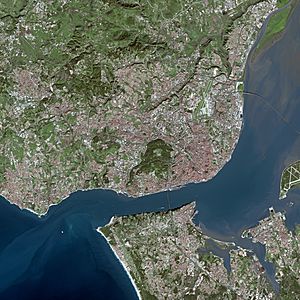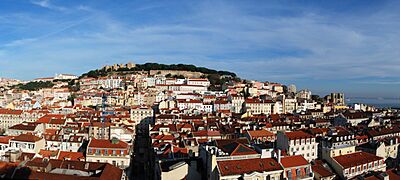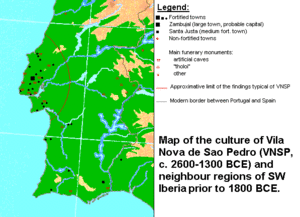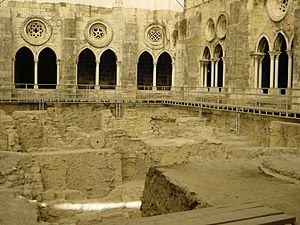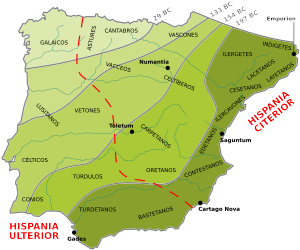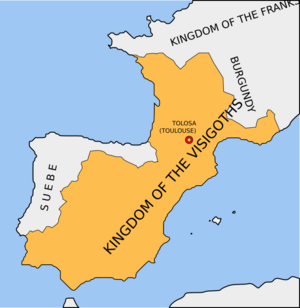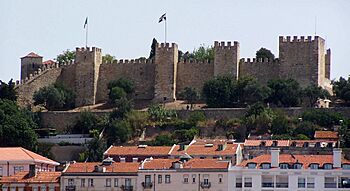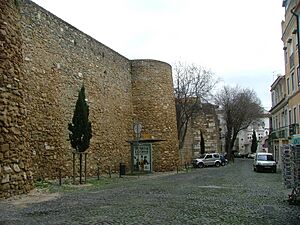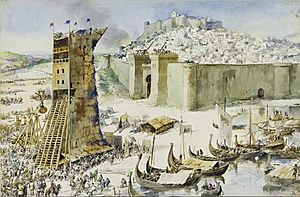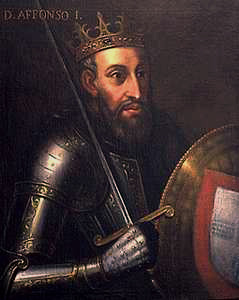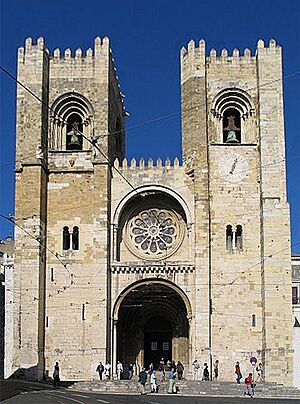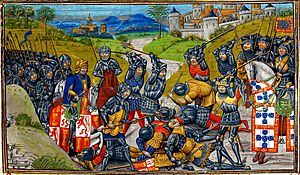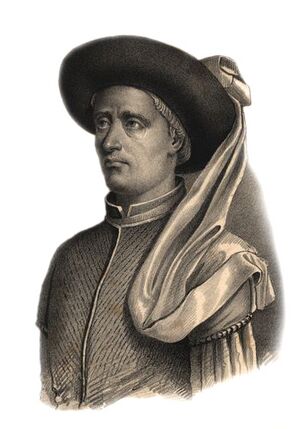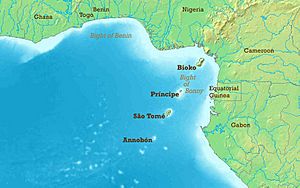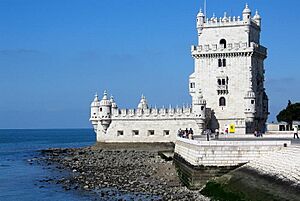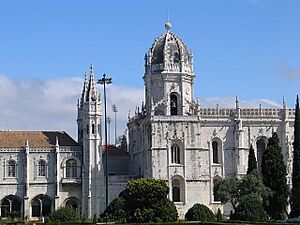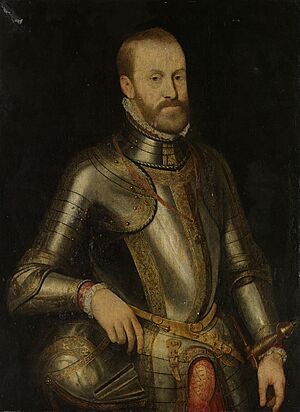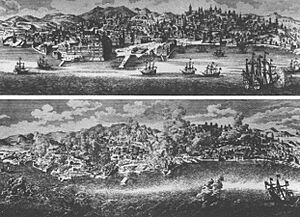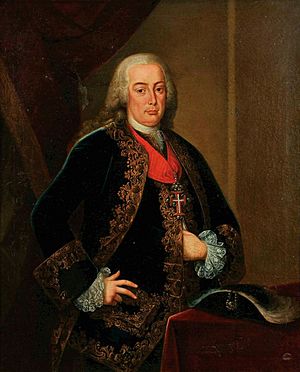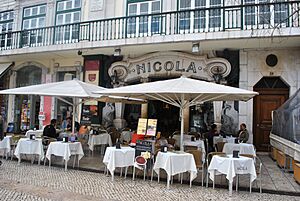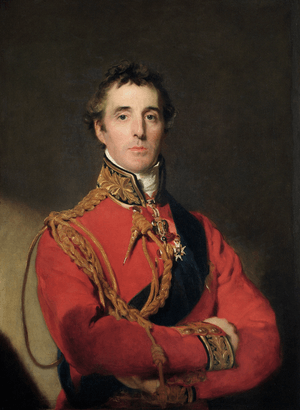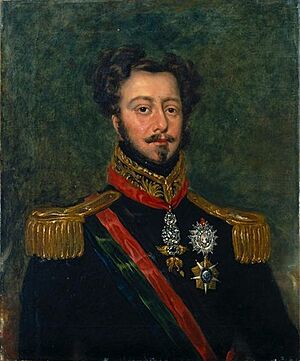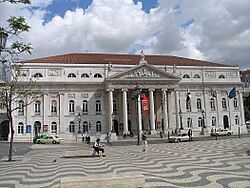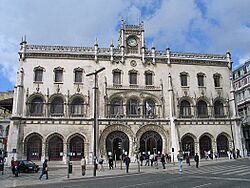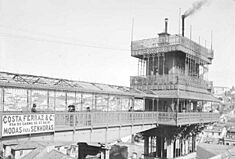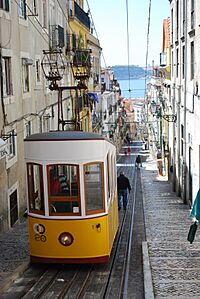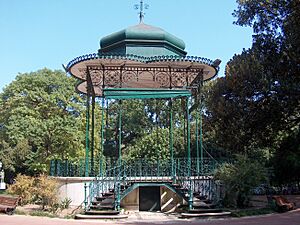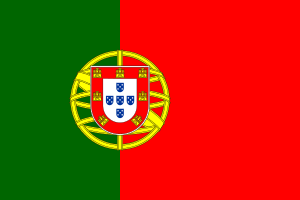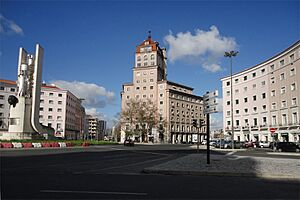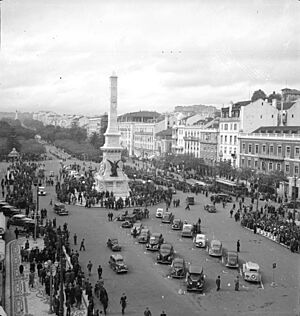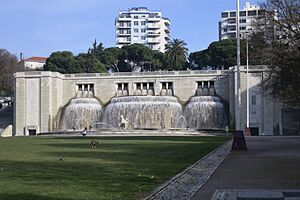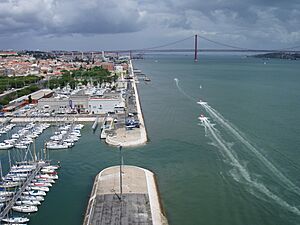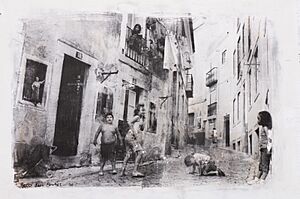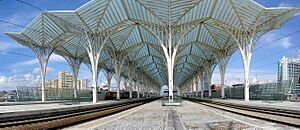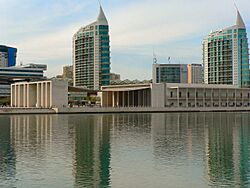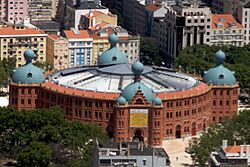History of Lisbon facts for kids
Lisbon is the capital city of Portugal. Its history is all about its great location at the mouth of the Tagus River. This river is the longest in the Iberian Peninsula (where Portugal and Spain are). Lisbon's big, safe natural harbor made it a super important seaport for trading between the Mediterranean Sea and northern Europe. Because it was so close to southern and western Europe, and to Africa and the Americas, Lisbon became a busy trade hub. Today, its waterfront has many docks for even the biggest ships.
Long, long ago, in the Neolithic period (the New Stone Age), people lived in the Lisbon area. You can still see remains of their stone monuments outside the city. Lisbon is one of the oldest cities in western Europe. Its story goes back to its first settlers, the Iberians and Celts. Later, Phoenicians and Greeks set up trading posts around 800-600 BC. After them, the Carthaginians, Romans, Suebi, Visigoths, and Moors all took turns ruling the city. Roman armies first came to the Iberian Peninsula in 219 BC. They took over the city of Olissipo (Lisbon) in 205 BC, after beating the Carthaginians in a big war. When the Roman Empire fell apart, Germanic tribes moved in. By 500 AD, the Visigothic Kingdom controlled most of Spain and Portugal.
In 711, Muslims, mostly Berbers and Arabs from North Africa, invaded the Christian Iberian Peninsula. They conquered Lisbon in 714. Portugal became part of the Emirate of Córdoba. Even though the Normans tried to take it in 844 and Alfonso VI in 1093, Lisbon stayed Muslim. But in 1147, Christian crusaders led by Afonso I captured the city after a four-month siege. Christian rule returned. In 1256, Afonso III moved his capital from Coimbra to Lisbon. He chose Lisbon because of its excellent port and central location.
Lisbon really grew rich in the 15th and 16th centuries. This was when Portugal had a huge empire during the Portuguese discoveries. It was a time of intense sea exploration. The Kingdom of Portugal gained great wealth and power by colonizing parts of Asia, South America, Africa, and the Atlantic islands. You can still see how rich the city was by looking at the amazing buildings from that time. These include the Jerónimos Monastery and the nearby Tower of Belém. Both are now UNESCO World Heritage Sites.
The 1755 Lisbon earthquake, along with big fires and a tsunami, almost completely destroyed Lisbon. Marquis of Pombal led the rebuilding of the city. He was responsible for creating the elegant new downtown area, the Baixa Pombalina.
During the Peninsular War (1807–1814), Napoleon's army occupied Lisbon for four years starting in December 1807. The city, like the rest of the country, fell into chaos. After the war ended in 1814, a new constitution was made, and Brazil became independent. The 20th century brought big political changes to Lisbon and Portugal. In 1908, King Carlos and his son Luís Filipe were killed in the Praça do Comércio. On October 5, 1910, Republicans organized a coup d'état (a sudden takeover of government). They overthrew the monarchy and created the Portuguese Republic. There were 45 changes in government between 1910 and 1926!
The right-wing Estado Novo government ruled Portugal from 1926 to 1974. This was the longest-lasting dictatorship in Western Europe. It took away people's freedoms. The regime was finally overthrown by the Carnation Revolution on April 25, 1974. This started in Lisbon with a military coup. People joined in, leading to the fall of the Estado Novo. Democracy returned, and Portugal left its African colonies and East Timor. After the revolution, many refugees from the former African colonies came to Lisbon in 1974 and 1975.
Portugal joined the European Community (EC) in 1986. This brought a lot of money for rebuilding. Lisbon's local services improved, and its container port became the biggest on the Atlantic coast. The city was in the spotlight as the 1994 European City of Culture. It also hosted Expo '98 and the 2004 European Football Championships. In 2006, urban renewal projects continued. These included restoring the Campo Pequeno bullring and improving the metro system.
Contents
- Ancient Lisbon: From Stone Age to Roman Rule
- Lisbon in the Middle Ages
- Lisbon, Mistress of the Seas
- Lisbon Under Spanish Rule (1580-1640)
- Portugal Regains Independence (1640)
- The Great Earthquake of 1755 and Rebuilding
- Civil War and British Influence (1800s)
- Lisbon in the Late 1800s and Early 1900s
- The 1910 Revolution and First Republic
- The Second Republic: The New State (1933-1974)
- The Third Republic and Modern Lisbon
- 21st Century Lisbon
- Historical Population
- See also
Ancient Lisbon: From Stone Age to Roman Rule
People have lived in the Lisbon area for thousands of years. The Tagus River and its estuary made it a good place to live. The first humans were probably Neanderthals. They died out around 30,000 years ago when modern humans arrived. During the Neolithic period, farming communities lived near the coast. Some ancient burial places, called megaliths, dolmens, and menhirs, still exist around Lisbon. Permanent settlements only show up in records around 2500 BC.
Early Settlers and Traders
Writers in the Middle Ages said that the mythical hero Odysseus founded Lisbon. Some historians say the Estrímnios were the first known people in Portugal. They were called Oestrimni by the Romans. These early people traded by sea and land. Their fortified towns controlled trade on the rivers and coasts of central southern Portugal.
The Celts came to the Iberian Peninsula around 1000 BC. They mixed with the local people, forming Celtic-speaking tribes. These tribes settled in the fertile lands and created a territory the Greeks called Ophiussa (Land of Serpents).
Archaeological finds show that people lived on Lisbon's Castle hill from the 8th to 6th centuries BC. These early settlers traded with the Phoenicians. Phoenician pottery has been found there. It's believed a Phoenician trading post was located where the city center is now.
The Phoenicians traded with the local tribes. The Mar da Palha (Sea of Straw) harbor was perfect for their trading ships. Legend says they sailed to Britain for tin, but this isn't proven. The Phoenicians called their trading post Alis Ubbo, meaning "Pleasant Haven." It was an important trade center, exchanging manufactured goods for metals, salted fish, and salt.
Roman Lisbon: Olisipo
The Roman name for Lisbon was Olissipo. Local legends say the hero Odysseus founded the city. Lisbon grew around a pre-Roman settlement on the Castelo de São Jorge hill. During the Second Punic War, the Romans defeated the Carthaginians in Spain.
In 138 BC, the Romans made an alliance with Olissipo. They fortified the city with defensive walls against local raids. The townspeople fought with the Romans. In return, the city became a Roman municipality called Olisipo Felicitas Julia. It was part of the Roman province of Lusitania. Citizens had Roman rights and didn't pay taxes. The city had about 30,000 people, including many Greek traders and slaves.
Olissipo was an important trade center, linking northern countries with the Mediterranean Sea. Its main products were garum (a fancy fish sauce), salt, and famous Lusitanian horses.
Germanic Invasions
After the Roman Empire fell, Germanic tribes invaded the peninsula. They were first welcomed as settlers but soon became conquerors. In the early 5th century, the Vandals took Olissipo, followed by the Alans. In 419, the Visigothic king Walia plundered and burned Olissipo. In 469, it became part of the Suevi kingdom. Later, the Visigoths conquered the Suevi, uniting the Iberian Peninsula. Lisbon, which they called Ulixbona, lost its political ties with Constantinople but kept its trade links.
Lisbon in the Middle Ages
Muslim Lisbon: Al-Us̲h̲būna
By the early 8th century, Ulixbona was a small village after centuries of invasions. In 711, Arabs and Moors invaded the Iberian Peninsula. They conquered Ulixbona in 714.
Lisbon, now called "al-Us̲h̲būna" by the Arabs, became a major trade and administration center. It collected local products and traded them for goods from the Arabic Mediterranean. The city was one of the largest in Europe at the time, much bigger than Paris or London.
Most local people adopted Arabic. Christians, called Mozarabs, had their own bishop and spoke a mix of Arabic and Latin. They were tolerated if they paid a tax. The Jewish community grew, becoming influential merchants. They traded spices, herbs, honey, furs, and more. Slaves from Eastern Europe, called Saqaliba, also became important in society.
Al-Us̲h̲būna was rebuilt with high walls, a large mosque, a castle, and a city center. The Alfama neighborhood grew next to the main city. A fortress was built on the south bank of the Tagus to protect the port. Arabs and Berbers introduced new irrigation methods, making farming much more productive.
Lisbon became part of the Umayyad Caliphate. Later, it came under the Emirate of Córdoba. Christian armies often raided al-Us̲h̲būna. In 844, Vikings attacked and conquered the city for 13 days before being driven out. In the 10th century, various Islamic groups rose up against the Muslim rulers. Mozarabs and Jews sometimes faced persecution.
Kings from Asturias and León tried to take the city, but it was often retaken by Muslims. In 1111, the Almoravid dynasty from Morocco took Lisbon. But this new rule didn't last long, and Lisbon became powerful again.
The Christian Conquest of Lisbon
In the 11th century, the Muslim rule in Spain and Portugal began to break apart. The Christian Kingdom of León grew stronger. The county of Portugal became an independent kingdom in 1139. Lisbon, known for its wealth, became a target.
Afonso I and his Christian forces tried to conquer Lisbon in 1137 and 1140 but failed. In 1147, many crusaders from England, Normandy, and Germany were on their way to the Holy Land. Bad weather forced them to stop in Portugal. They were convinced to join Afonso I in a new attack on Lisbon. The Portuguese attacked by land, and the crusaders attacked by sea.
Legend says a Portuguese knight, Martim Moniz, blocked the castle gates with his body, allowing his friends to enter. The Moors surrendered on October 22. After the city was taken, some crusaders plundered it. Then, a terrible plague killed thousands of people.
Afonso I officially took the city on November 1. The Great Mosque was turned into a Cathedral, dedicated to St. Mary. An English crusader, Gilberto of Hastings, became the first Catholic bishop.
Medieval Christian Lisbon
After conquering Lisbon, Afonso I found the relics of Saint Vincent of Saragossa. Legend says two crows guided the boat carrying them to Lisbon. Because of this, the crow became a symbol on Lisbon's coat of arms.
In 1150, Afonso I built a cathedral on the site of the Great Mosque. He also gave Lisbon special rights in 1179 and started a new market. Portuguese merchants, both Christian and Jewish, re-established trade links and opened new routes to northern Europe. Lisbon became a key point for sea trade between the North Sea and the Mediterranean. New ships like the caravel were developed, making ocean travel easier.
In 1256, Afonso III moved the capital from Coimbra to Lisbon. King Denis created a university in Lisbon in 1290, but it moved to Coimbra later due to student conflicts. He also built new walls and rebuilt the Moorish Palace and the Cathedral.
Lisbon became a major international trade city. Many foreign merchants, especially from Genoa, lived there. They brought new mapping and sailing techniques, as well as banking knowledge. In 1308, King Denis formed an alliance with England, which became Lisbon's main trading partner.
The city had many workers, merchants, fishermen, and farmers. Artisans formed guilds to protect their trades. The aristocracy built palaces in Lisbon. But the most powerful group was the bourgeoisie (rich merchants). They controlled the city's economy and pushed for new explorations.
Jewish people were a large minority in Lisbon. They were great traders and scholars. The first book printed in Lisbon was in Hebrew in 1489. Muslims also had their own quarter. Most were low-skilled workers or slaves.
Lisbon faced many challenges. Earthquakes in 1290, 1344, and 1356 destroyed parts of the city. The Black Death in 1348 killed half the population. These disasters led to big social and economic changes, but also paved the way for new discoveries.
The 1383–1385 Crisis: A New Beginning
A big change happened in Lisbon during the 1383–1385 Crisis. This was a civil war when Portugal had no king. When King Ferdinand I of Portugal died without sons, the kingdom was supposed to go to the King of Castile. The powerful nobles in northern Portugal supported this.
However, the merchants of Lisbon didn't want to join Castile. They feared it would cut off their trade with England and northern Europe. They supported the Master of Avis instead. This war was between the old land-owning nobles and the rich merchants of Lisbon. The merchants, with their English connections, won. The Master of Avis became King John I of Portugal. His forces survived the Siege of Lisbon and won the Battle of Aljubarrota in 1385. This made Lisbon the true center of power in Portugal.
The new merchant nobles built palaces in Lisbon. The university returned to the city. New buildings with several floors were built. The city's streets were narrow and unpaved. Lisbon imported wheat from other countries. It became a major trade center on the Atlantic coast, like Venice or Hamburg. The city council tried to improve hygiene by banning trash in the streets.
Portugal's foreign policy now focused on trade. Agreements were signed with Venice, Genoa, and Florence. In 1415, Portugal captured Ceuta in North Africa. This gave Lisbon's merchants a base to fight pirates and control Mediterranean trade. It also helped them get Moroccan wheat and gold.
Lisbon, Mistress of the Seas
Lisbon's prosperity was threatened when the Ottoman Empire took over Arab lands in the 15th century. This made trade in spices and gold difficult. Lisbon's merchants, many with ties to North Africa, decided to find new trade routes directly to the sources of these goods.
Prince Henry the Navigator, based in Tomar, strongly supported this. He used funds from the Order of Christ to set up sailing schools. Expeditions were launched, and Portuguese ships reached the Gulf of Guinea around 1460.
After Henry's death, the African trade grew. In 1469, King Afonso V gave the Lisbon merchant Fernão Gomes a monopoly on this trade. Gomes explored 100 leagues (about 300 miles) of West African coastline each year. He used his profits to help Afonso conquer cities in Morocco.
The old nobles in northern Portugal wanted to conquer more land in North Africa. This would give them more land and power. But the merchants in Lisbon wanted to invest in discovering new African and Asian markets. King John II, with the merchants' support, fought against these nobles. The merchants won, and the Crown became the main political power. John II focused on exploring the Atlantic to find a sea route to India.
As the islands of Madeira and the Azores were colonized, they produced sugar and wine for Lisbon. In Guinea, cheap goods from Lisbon were traded for gold, ivory, and slaves. This brought new trade to Lisbon. Gold from Guinea and the Gold Coast was very important, as Europe lacked this precious metal.
The best markets were in India and the East. The war between the Ottoman Empire and Venice made spices very expensive. To get around this, a voyage led by Vasco da Gama was organized. His ships reached India in 1498.
By the end of the 16th century, Portuguese merchant fleets reached China (founding Macau), Indonesia, and Japan. They set up trading posts and made agreements with local rulers. Afonso de Albuquerque secured these ports in the Indian Ocean. Meanwhile, Pedro Álvares Cabral arrived in Brazil in 1500.
Lisbon became the main market for luxury goods in Europe. It sold African products, spices, silks, diamonds, and Brazilian sugar. Other Portuguese cities had little foreign trade; Lisbon controlled almost everything. German and Italian merchants set up trading houses in Lisbon.
In the 16th century, Lisbon was one of the richest cities in the world. Its prestige grew so much that Thomas More mentioned Portuguese discoveries in his book Utopia. King Manuel I held festivals with parades of exotic animals. He even sent an Indian rhinoceros as a gift to the Pope.
To manage trade and taxes, big Portuguese trading houses were founded in Lisbon. Their huge profits financed the building of the Jerónimos Monastery and the Belém Tower. These buildings show the Manueline architectural style, inspired by overseas discoveries. The city grew to nearly 200,000 people. The Bairro Alto neighborhood became the richest.
The 16th century was a golden age for Portuguese science and arts in Lisbon. Scholars, mathematicians, doctors, and writers lived there. Isaac Abravanel, a great Hebrew philosopher, was the King's Treasurer. Everyone benefited from the city's wealth. African slaves and Galicians did the heavy manual labor.
The Jewish population was very important to Lisbon's economy. They were traders, scholars, and professionals. In 1496, Spain expelled its Jews. Many fled to Lisbon, possibly doubling its population. In 1497, Manuel I ordered all Jews to convert to Christianity or leave. Many became "New Christians" but secretly practiced Judaism.
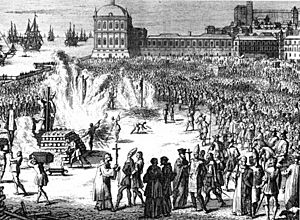
In 1506, a terrible massacre of New Christians occurred, killing thousands. This led to the start of the Portuguese Inquisition in 1536. The Inquisition persecuted New Christians, taking their property. Many merchants fled to England or the Netherlands, taking their knowledge with them. Lisbon's economy suffered greatly.
In 1578, the young King Sebastian I and many nobles were killed in a battle in Morocco. This led to a succession crisis. Philip II of Spain claimed the throne. He sent an army and was crowned Philip I of Portugal in 1581. This began a 60-year union of Portugal with Spain (1580–1640).
Lisbon Under Spanish Rule (1580-1640)
The Philippine Dynasty ruled Portugal from 1581 to 1640. The 16th century was Lisbon's golden age, but the 60 years under Spanish rule brought economic problems and wars.
Philip II of Spain, who became Philip I of Portugal, considered making Lisbon the capital of his huge empire. He ordered renovations to the Ribeira Palace and the Monastery of São Vicente de Fora. New city walls and forts were built to defend against pirates.
In 1588, Philip sent a huge armada against England. Lisbon's ships were part of this fleet. The armada was defeated, partly due to storms and the faster English ships. This was a big loss for Lisbon's fleet.
Throughout the 17th century, the Dutch, English, and French started taking over Portuguese trading posts in the East. This hurt Portugal's spice and slave trades. Spain also used Portugal's wealth to fund its wars in Europe. Lisbon gradually lost its overseas ports and access to foreign products. Many merchants were persecuted by the Inquisition, losing their wealth.
By the end of Philip III's reign, Lisbon had lost much of its importance. It became a provincial city with less influence. Its population and trade shrank. Crime increased, and a special police force was created. In 1640, Spain tried to impose new taxes on Portugal and make it a Spanish province. This led to a rebellion.
Portugal Regains Independence (1640)
The 'Philippine dominion' ended in 1640 with the Portuguese Restoration War. Portugal regained its independence under the Braganza dynasty.
Lisbon's merchants and lower nobility asked the Duke of Braganza to become king. On December 1, 1640, rebels attacked the royal palace in Lisbon. They faced little resistance and declared the duke the new King of Portugal, John IV.
Brazilian Gold and Lisbon's Changes
After regaining independence, Lisbon saw a rise in Catholic religious orders. Many younger sons, who didn't inherit land, joined these orders.
The country's financial problems were finally solved by gold discoveries in Brazil (in what is now Minas Gerais) between 1693 and 1695. The Portuguese state taxed one-fifth of the gold. This "royal fifth" started arriving in Lisbon in 1699. Revenues quickly grew, reaching over 3 tonnes annually in the 1750s. This huge income funded grand buildings for Lisbon's clergy and nobles, built in the new Baroque style. These included palaces and the Church of Santa Engrácia.
Despite the wealth of the elite, common people lived in poor conditions. Lisbon became known as a dirty city. Between 1700 and 1800, thousands of tonnes of gold and millions of carats of diamonds came from Brazil. This encouraged many Portuguese to move to Brazil.
Lisbon's merchants benefited by supplying goods to the Brazilian colonists. They also traded African slaves for gold in Rio de Janeiro.
The Great Earthquake of 1755 and Rebuilding
A new era for Lisbon began on November 1, 1755, All Saints Day. A huge earthquake destroyed two-thirds of the city. Many people ran to the squares by the Tagus River, but a 7-meter high tsunami flooded the river's mouth about 30 minutes later. Fires raged for six days.
Thousands of buildings collapsed, including churches, monasteries, and palaces. Of the 180,000 inhabitants, between 30,000 and 60,000 died. The Marquis of Pombal, a powerful minister, saw this as a chance to rebuild Lisbon with new ideas from the Age of Enlightenment.
Pombal famously told the king: "Bury the dead. Feed the living. Rebuild the city." He refused to move the capital. Engineers and surveyors planned the rebuilding. The Águas Livres Aqueduct, built in 1748, survived the earthquake because it was so well made.
The rebuilding of downtown Lisbon included a new naval arsenal (shipyard). The royal income from Brazil paid for most of the project. Lisbon also received aid from England, Spain, and the Hanseatic League.
The new downtown area, called the Baixa, was designed with wide, straight avenues. This allowed for better air flow, light, and security. Buildings had to follow strict rules and were designed to withstand earthquakes. They used a special wooden frame called the gaiola pombalina (Pombal Cage).
The main street was Rua Augusta, connecting the Rossio and the Praça do Comércio. The rebuilding took a long time, until 1806, due to lack of money. Pombal also limited the power of the Church and the old aristocracy. He expelled the Jesuits and executed members of the Távora family for a plot against the king.
By the 1770s, Pombal had weakened the Inquisition. New Christians, who were often educated and liberal, gained access to high government jobs. Industry was encouraged, and many new factories were built. Taxes that hurt trade were removed.
The economy slowly recovered. Lisbon grew to 250,000 people. New neighborhoods developed. Factories appeared near the new aqueduct. Pombal tried to help the middle class grow. The first cafes opened, like Martinho da Arcada and Nicola. The middle class became a source of new political movements.
After King Joseph died, his daughter Maria I became queen. She was very religious and reversed some of Pombal's reforms. Economic conditions worsened. A police force was created to deal with rising crime. Progressive ideas were suppressed, and many liberal works were banned.
Civil War and British Influence (1800s)
The American and French Revolutions inspired liberal ideas in Europe. When Napoleon came to power in France, he tried to block British trade. Portugal, allied with Britain, defied him. In 1807, Napoleon's forces invaded Lisbon. The Portuguese royal family, led by Prince John VI, fled to Brazil with a British escort. The British Army under Arthur Wellesley (later Duke of Wellington) intervened, starting the Peninsular War.
When the French entered Lisbon, they were initially welcomed by some. But their violent behavior soon turned people against them. Napoleon wanted to make Lisbon part of the French Empire. The British, led by Wellesley, forced the French to retreat in late 1808. The British then took control of Lisbon's government, making Portugal almost a British colony.
Wellington's chief engineer built the Lines of Torres Vedras to defend Lisbon. These lines were so strong that the French army could not break through in 1811. After this, the British and Portuguese troops went to Spain and defeated the French.
The people of Lisbon were unhappy with the British occupation. In 1820, Liberals rebelled in Porto and Lisbon, expelling the British. They created a new constitution in 1822, which ended privileges for the clergy and nobility.
From 1828 to 1834, Portugal had a civil war between conservatives (who wanted an absolute monarch) and liberals (who wanted a constitutional government). Pedro I of Brazil, who was also Pedro IV of Portugal, led the liberals to victory. The new constitution brought reforms like freedom of the press and ending the slave trade. It also took property from the Catholic Church.
The city got street lighting, first with olive oil lamps, then gas lamps. New roads were built, and steamships linked Lisbon to Porto. The first railway line in Portugal, between Lisbon and Carregado, opened in 1856.
Lisbon's economy suffered when Brazil became independent, as its gold no longer flowed into the capital. The city lost its international influence. Poverty and unemployment increased.
Lisbon in the Late 1800s and Early 1900s
After the wars, Lisbon's economy declined. Northern European nations grew rich through industrialization, while Portugal struggled. The ruling classes allowed limited reforms but kept political power.
Lisbon was seen as a poor and dirty city compared to northern Europe. Its trade mostly came from its colonies in Angola and Mozambique. Many poor Lisboners moved to Brazil. A rich upper class lived lavishly, but the country remained rural and backward.
Prime Minister Fontes Pereira de Melo encouraged economic growth and industrialization. A railway line connected Lisbon to Porto. Electric lighting came in 1878. Urban development plans were made to improve the city's image. Buildings were decorated with ceramic tiles called azulejos. Plumbing and sewage systems were installed to fight cholera epidemics. Streets were paved with traditional cobblestones. Horse-drawn streetcars appeared in 1873, replaced by electric trams in 1901.
The city's cultural and commercial center moved to the Chiado neighborhood. New stores, clubs, and cafes opened there. The Avenida da Liberdade (Liberty Avenue) was built as the city's central axis. New neighborhoods like Campo de Ourique and Estefânia grew. The upper classes lived in the western part of the city, while the working class lived in the eastern side.
Bullfighting and fado became popular entertainments. Large public gardens, like the Jardim da Estrela, were created. Lisbon's society was a mix of old nobles and new rich merchants. The city was the industrial center, but factory workers lived in poor slums.
The middle class, tired of high taxes and few benefits, supported a new radical movement: Republicanism. They wanted universal voting rights, an end to Church privileges, and to overthrow the corrupt elite.
The 1910 Revolution and First Republic
The Republican Party grew stronger in Lisbon. They promised to improve working conditions. In the late 19th century, industrialization began in Lisbon and Porto. New factories created a working class. Tobacco, matches, textiles, and glass were major industries. Workers often lived in miserable slums with no services.
In 1907, Prime Minister João Franco created an authoritarian government. In 1908, King Carlos I and his son were killed in Lisbon by assassins. In 1909, Lisbon workers organized strikes. In 1910, Lisbon revolted. People built barricades, and the army had many defections. On October 5, 1910, the armed forces overthrew the monarchy. The First Republic was declared.

The First Portuguese Republic (1910–1926) was a time of political instability. There were 45 changes in government in less than 16 years. Strikes, demonstrations, and bombings happened in Lisbon. In 1916, Germany declared war on Portugal after Portugal interned German ships.
In 1918, the Spanish flu hit Lisbon, killing thousands. Sidónio Pais, a military leader, was murdered in central Lisbon.
During this period, Lisbon continued to expand northward. The "Avenidas Novas" (New Avenues) became a fashionable area with grand new homes for the wealthy middle class. Many buildings were built quickly, sometimes with safety issues.
The First Republic ended in 1926 when conservative forces took power. This led to the Estado Novo, a new authoritarian government centered in Lisbon.
The Second Republic: The New State (1933-1974)
The New State (Estado Novo) was an authoritarian government in Portugal from 1933 to 1974. It was led by António de Oliveira Salazar, who ruled as a dictator from 1932 to 1968. The regime was very conservative and nationalistic.
In the 1930s, Duarte Pacheco, as Public Works minister and later Mayor of Lisbon, planned big changes for the city. He invited French architects to design a coastal road from Lisbon to Cascais, highlighting the city's beautiful location.
Pacheco also oversaw the building of the University Campus, the widening of Alameda D. Afonso Henriques, and new developments in the north of the city.
In 1940, Lisbon hosted The Portuguese World Exhibition. This event celebrated Portugal's history and promoted the New State's ideas. It attracted over 3 million visitors. The Lisbon marina was built for this fair.
During World War II, Lisbon was a neutral city. It became a meeting place for spies and a symbol of hope for many refugees trying to escape to the United States or Palestine.
In 1956, the first Tall Ships' Race from Torquay to Lisbon was held. It was meant to be a farewell to large sailing ships, but it became so popular that more races were organized.
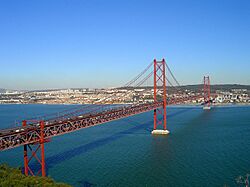
On August 6, 1966, a suspension bridge connecting Lisbon to Almada was opened. It looks similar to the Golden Gate Bridge in San Francisco. This bridge made it easier for Lisboners to reach the beaches of Costa da Caparica.
Urban renewal projects in the 1930s-1970s destroyed much of the old Mouraria neighborhood. In the later years of the New State, Lisbon's population grew rapidly due to economic development. Many people moved from rural areas to the capital, living in poor neighborhoods. The government focused on modernization and industrialization, improving living standards.
The Estado Novo was finally overthrown by the Carnation Revolution on April 25, 1974. This military coup, joined by popular resistance, ended the dictatorship. Democracy was restored, and Portugal withdrew from its African colonies.
The Third Republic and Modern Lisbon
The Carnation Revolution of 1974 brought the Third Republic and democratic reforms. When Portugal joined the European Union (EU) in 1986, it received funds for urban renewal. Slums in Lisbon have been reduced, though some problems remain. In 1988, a fire damaged the Chiado historical center.
Expo '98 (1998 Lisbon World Exposition) celebrated Vasco da Gama's voyage to India. It led to a major renovation of the city. The Vasco da Gama Bridge, Europe's longest bridge, was built for the fair. The Expo site later became Parque das Nações (Park of Nations), a popular area with gardens, the Lisbon Oceanarium, and modern buildings. It's now a residential and business center.
Lisbon has also hosted international meetings, including the Ibero-American Summit. Portugal's entry into the EU brought significant funds for redevelopment. Lisbon was the European Capital of Culture in 1994. The Lisbon Strategy, an EU agreement to improve the European economy, was signed in the city in 2000.
21st Century Lisbon
In the early 21st century, Lisbon's local government expanded the metro system. The Gare do Oriente transportation hub, designed by Santiago Calatrava, was finished for Expo '98. Lisbon's international airport is in the city center, but it might face expansion issues.
Lisbon hosted many world sports championships between 1999 and 2001. The Museu do Design e da Moda (Museum of Design and and Fashion) opened in 2002. In 2005, Lisbon hosted the MTV Europe Music Awards. In 2007, it was the site for the election ceremony of the "New 7 Wonders Of The World."
The Campo Pequeno bullring, built in the 1890s, was renovated and reopened in 2006 as a multi-event venue. It now hosts concerts and other performances.
Many immigrants from Portuguese-speaking African countries came to Lisbon in the early 21st century. They filled jobs in services and construction. Lisbon still has traditional outdoor vegetable gardens, providing fresh produce to residents.
The Treaty of Lisbon, signed in December 2007, was a major EU event held in Portugal. It aimed to improve how the European Union works. The NATO Lisbon Summit in 2010 focused on NATO's new plans for coordination and addressing modern threats.
Historical Population
| Demographic evolution of Lisbon | |||||||||||||||||||
|---|---|---|---|---|---|---|---|---|---|---|---|---|---|---|---|---|---|---|---|
| 43 | 900 | 1552 | 1598 | 1720 | 1755 | 1756 | 1801 | 1849 | 1900 | 1930 | 1960 | 1981 | 1991 | 2001 | 2011 | ||||
| 30,000 | 100,000 | 200,000 | 150,000 | 185,000 | 180,000 | 165,000 | 203,999 | 174,668 | 350,919 | 591,939 | 801,155 | 807,937 | 663,394 | 564,657 | 545,245 | ||||
See also
 In Spanish: Historia de Lisboa para niños
In Spanish: Historia de Lisboa para niños
- History of Portugal
- Timeline of Lisbon


